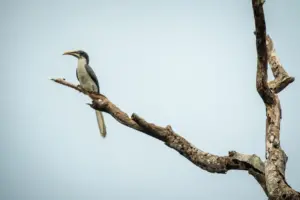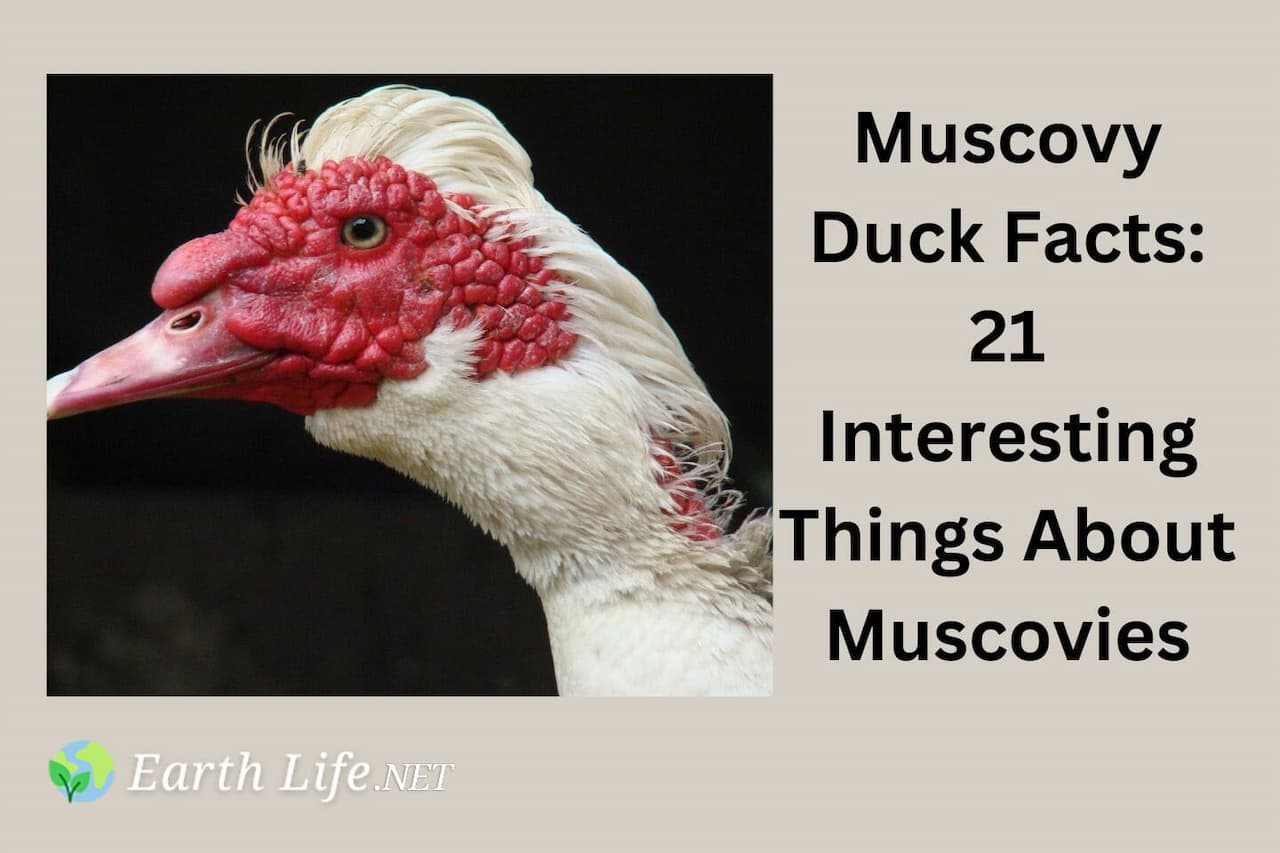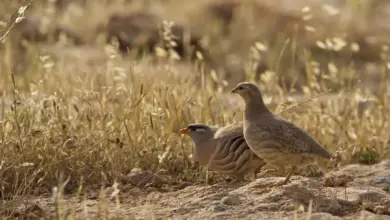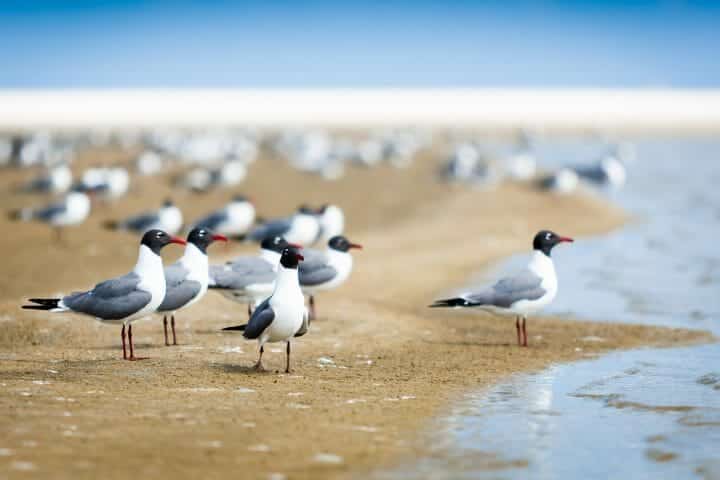Sri Lanka Ceylon Grey Hornbill
Ceylon Grey Hornbill (Ocyceros gingalensis)
Bucerotiforme Order – Bucerotidae Family
Ceylon Grey Hornbill Biometrics
Length: 45cm
Weight: M: 232 g
It is one of the more common endemic species. It is a species that lives in tall forests. The birds are found in the lowlands of the wet zone (except the coastal areas), the mid-hills, up to an altitude of 1,200 meters and the adjacent intermediate zones and dry zones. The bird is usually seen in small groups or pairs, but larger flocks are more likely to congregate at fruiting trees. The feeding action is amazing: the prey or fruit is grabbed with the tip of the beak, then thrown into the air before being engulfed.
Both sexes have a similar size. However, the male can be differentiated from the female by the cream-coloured bill with black blotches at the base. The bill of a female is black, with a cream-coloured stripe running along the lower edge. This species calls with a loud, kaa..kaa..kaa.
The hornbill reproduce between April to August. The female enters the cavity and seals herself with her own excreta. The male will feed her through a narrow vertical slit, but it is not closed. She lays one to three white eggs (41,5x33mm), incubates and moults them. After the chicks hatch out, the newly-fledged hen leaves her cell to help the male feed the brood.
Ceylon Grey Hornbill Description
Ceylon Grey Hornbills are a small, nocturnal species.
The upperparts of the adult male are dark grey with a scaly appearance on the back and upperwing covers. The primaries have a white tip. The outer rectrices of the long tail are white-tipped.
The underparts of the bird are white, with a slight buff tint on the vent and undertail coverts. The undertail feathers of the tern are creamy-white.
The head, crown, forehead, ear-coverts, and nape are all brownish-grey with pale streaks. The head feathers are arranged in a slightly bushy crest that extends to the nape. The neck, chin and throat are greyish white.
The bill is long and down-curved, creamy to pale yellowish. It has a blackish base with a black patch beneath the lower mandible.
The eyes are deep-red, and are surrounded by a broad blackish eye ring. Legs and foot are grey.
Fr : Calao de Ceylan
Ceylontoko
Esp: Calao Gris Cingales
Ital: Bucero grigio di Sri Lanka
Ceylonese Tok
Ceylon Grey Hornbill References
HANDBOOK OF THE BIRDS OF THE WORLD Vol 6 by Josep del Hoyo-Andrew Elliott-Jordi Sargatal – Lynx Edicions, 2001 – ISBN: 848733430X
BirdLife International (2004). Ocyceros gingalensis. 2006. IUCN Red List of Threatened Species. International Union for Conservation of Nature (IUCN) 2006. Retrieved on 11 May 2006. Database entry includes justification for why this species is of least concern
Birds of India by Grimmett, Inskipp and Inskipp, ISBN 0-691-04910-6





